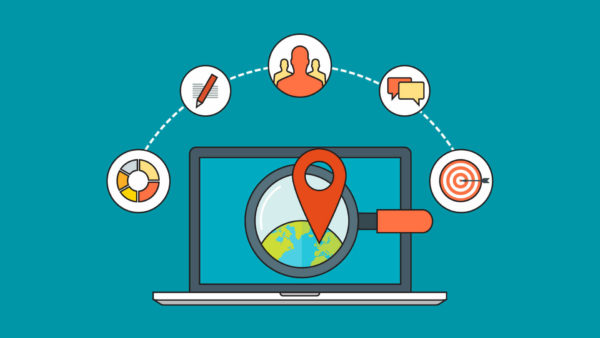How brands can win with omnichannel discovery

Omnichannel marketing is quickly becoming the norm in a multi-device world, and columnist Adam Dorfman explains the steps business can take to begin developing an omnichannel location strategy.
Omnichannel marketing is not new, but the concept continues to fascinate writers and practitioners alike, myself included. That’s because consumer behavior keeps changing, and businesses need to be responsive to these changing behaviors so that they can continue to be found.
While brands used to worry about coordinating their marketing across different channels, now they need to respond to the reality that people are using multiple channels, devices and communication modes to get what they want in an increasingly on-demand fashion. For instance, you can now order a pizza with a voice command to Amazon Echo or with an emoji on Twitter.
Welcome to the world of omnichannel discovery.
As I noted in a previous Search Engine Land column, consumers long ago graduated from Google searches on desktops and mobile phones, with an explosion of devices and technologies continuing to shape how and where we search.
According to Nielsen, “Americans now own four digital devices on average, and the average US consumer spends 60 hours a week consuming content across devices.”
Consequently, as Forrester Research noted in a private report, people discover brands and transact with them in a variety of ways, ranging from social networks to apps.
Google calls these touch points micro-moments because people decide what to do and what to buy through rapid moments of decision-making — which can be challenging for brands trying to figure out how to turn omnichannel micro-moments into business at a location level.
Businesses can win in a world of omnichannel discovery by leading consumers through a smooth journey across channels. Doing so means creating the right experience for the right channel and customer. A mobile wallet offer might be perfect for connecting with a consumer doing a mobile search using Google, but not so much for someone using Snapchat to have a playful experience with a brand.
Some brands are giving us a glimpse of how to manage the omnichannel journey by creating experiences appropriate for each channel and device. Here are a few:
Disney
Disney guides Disney World visitors through an omnichannel journey that ranges from the desktop to mobile to wearables. Disney understands that searching for and booking a vacation is a complicated task that usually occurs on the desktop.
Accordingly, the My Disney Experience website contains myriad functions appropriate for planning a visit, ranging from choosing lodging to buying tickets. Click-to-call functionality and live chat make the potentially complicated process a lot easier.
From there, Disney transitions users to the Disney Experience app for discovering things to do and checking crucial information such as wait times for attractions while visitors are on-site.
Disney also offers the increasingly popular MagicBand RFID wearables that make it easy for guests to manage transactions during their stay, such as purchasing food. By storing information about guests (including their locations throughout a day at the parks) through MagicBands, Disney can design more personal experiences based on their preferences.
Domino’s Pizza
Domino’s operates over 5,200 stores in the United States and gets more than 50 percent of its sales through digital channels — with half of those coming from mobile.
Domino’s thrives in an on-demand world by adapting to consumer behavior. Ordering pizzas with emojis and voice commands are not gimmicks because voice-related searches and the use of emojis reflect how people are interacting with each other and with brands in the post-digital age.
I think it’s telling that Domino’s CEO, Patrick Doyle, transitioned the company to the smartphone age by famously tasking his Information Technology team to “Make it so a customer could order a pizza while waiting for a stoplight.” He understood intuitively that mobile was, and remains, rooted in this kind of behavior.
Nowadays, you can also order Domino’s pizzas through a growing number of channels and devices beyond Twitter and Echo, including mobile apps, Facebook messenger bots, your Apple Watch and smart televisions. Domino’s is a great example of creating the right experience for the consumer, channel and device.
What you should do next
Succeeding in a world of omnichannel discovery requires businesses to take stock of their customers’ journeys, develop an omnichannel location data strategy and share content and experiences that turn discovery into commerce. Here are three steps you can take now:
- Develop an omnichannel location data strategy. Once you understand every touch point your customer uses, ensure that your brand is visible on each one through location data. In an omnichannel world, it’s not enough to possess accurate data on your stores’ location pages. You’ll need to distribute your location data across all the places where discovery is occurring, ranging from Facebook to mobile apps such as Google Maps.
- Understand your customer’s omnichannel journey. Examine the entire journey your customer takes from home to store. Ask questions such as how many touch points do they encounter, and what devices are they using to interact with your brand? Understanding your customer’s omnichannel journey will require you to employ tools such as journey maps, which designers use to research and depict the customer experience journey.
- Create next moments appropriate for each channel. As I have discussed previously, a “next moment” is the action that occurs after someone finds your brand through a search. A next moment for a Google search on a mobile device might consist of a mobile wallet offer. A next moment on Instagram or Pinterest might consist of sponsored visual content or promoted pins that encourage shoppers to visit brick-and-mortar stores to take advantage of a sale. In all three cases, the next moment needs to maximize and capitalize on the unique attributes of each channel and device (e.g., highly visual content for Instagram).
The next frontier of omnichannel discovery for businesses will involve using advanced analytics and consumer measurement tools to anticipate consumer discovery and either positioning themselves with the right solution before a search begins or pre-empting the search completely.
By deploying a location data strategy that involves being visible and creating next moments where consumers are conducting “near me” searches, you’ve set up your brand for success as the nature of omnichannel changes.



